Ohio is one of the best states in the U.S. for fossil collecting. This often comes as a surprise to people who often associate fossils with desert digging or beaches, but Ohio is home to some of the most prolific fossil beds in the entire world.
Millions of years ago, Ohio was covered in a shallow sea that made the area a perfect environment for marine life and fossil preservation. Today, the fossil-bearing rocks from that era are exposed on the surface.
You can find fossils in Ohio at fossil collecting sites in many state parks like Trammel Fossil Park, Oakes Quarry Park, and Caesar Creek State Park. In general, fossils are found in Paleozoic rock formations and include many species of trilobites, brachiopods, crinoids, and more. A permit is required in some cases.
Fossil collecting in Ohio can be a fun and rewarding experience, but it helps to know exactly where to look and what to look for. I’ll go into exactly where to go and give you a rundown of the types of fossils you can find.
Where to Find Fossils in Ohio
NOTE: This map shows public fossil collecting sites (in red) where collecting is usually permitted, but conditions may change. Blue markers indicate general areas by county and describe what types of fossils you may be able to find there if you have permission to collect. Always get permission to collect on any piece of property.
TIP: The county locations shown on the map are derived from the fantastic resource at fossilspot.com. There, you can find more detailed information on potential fossil sites.
Ohio is one of the best states in the country for fossil hunting and has long been a favorite destination for collectors, students, and enthusiasts. While you can find a wide variety of fossils in locations all across the state, the best collecting sites tend to be congregated in the southwest near Cincinnati and, to a lesser extent, the northwest part of the state.
One of the reasons Ohio is such a prolific state for fossils is that its entire surface geology is made up of sedimentary rocks. Many of these sedimentary rock layers contain or are even largely made up of fossils. While you can potentially find fossils in almost any stratigraphic layer in Ohio, there are several that are particularly of note.
The rock layers in Ohio that most famously contain fossil deposits are:
- Upper Ordovician Shales & Limestones near Cincinnati
- Middle Devonia Shales & Limestones in northwest Ohio
- The Columbus Limestone in central Ohio
- The Cleveland member of the Ohio Shale
The most prolific and famous area for fossil collecting in Ohio is a stretch of exposed limestone known as the Cincinnati Arch. This stretch of rock was compressed and uplifted during the Ordovician and Devonian periods (about 400 to 500 million years ago), bringing the fossil-rich rocks to the surface.
There is almost no limit to the types and species of fossils you can find trapped in Ohio’s bedrock. I’ll dive deeper into exactly what you can find later in this article, but for now just know that you can commonly find many different types of trilobites, cephalopods, brachiopods, coral, graptolites, plants, and even some vertebrate fossils like bony fish and shark teeth.
Tip: Check out my recommended gear page to make sure you have everything you need for a great day in the field.
Almost any rocky exposure or outcrop in Ohio will have the potential to yield some fossils if you look closely enough, but it can be difficult to gain access and permission to collect just anywhere. Your best bet is to head to one of several public parks where fossil collecting is permitted.
The best fossil collecting sites in Ohio are:
Fossil Park (Sylvania, OH)
Fossil Park, part of the Olander Park System, is one of the best fossil collecting sites in Ohio (and even the world). This park offers a rare opportunity to find your very own Devonian age fossils. You can find a wide variety of fossils including trilobites, brachiopods, coral, bryozoans, and crinoids!

The collecting is done in a safe, controlled environment where you dig through the tailings of a nearby quarry. Digging tools aren’t necessary (and are, in fact, prohibited), making this a perfect adventure for families with young children. You’re sure to find many fun fossil specimens to take home with you. And, best of all, it’s free!
The park recommends you bring along a brush like this one from Amazon to clean your fossils, as well as a bucket or container to store and transport your finds. Also, remember that the collecting area is out in the open, so be sure to dress appropriately and bring sunscreen.
Their contact information is below, and you can visit their website here.
- Address: 5705 Centennial Rd, Sylvania, OH 43560
- Phone: 419.882.8313
- Hours: 8:30am-6pm, during digging season (no winter)
- Price: FREE
Trammel Fossil Park
The Trammel Fossil Park is a unique and exciting place to dig for fossils. It’s completely free and open to the public, and offers you a chance to collect fossils in a less controlled environment than some of the other sites on this list.
Here, you can dig for fossils in their natural, undisturbed state instead of sifting through quarried rock. Many collectors will prefer this experience and find it more genuine. The fossils are plentiful, and you can take home anything you find. Just remember to be respectful and leave some for the rest of us!
You can find many of the same fossils here that are typical to the area including brachiopods, crinoid stems, coral, and more.
Their contact information is below, and you can visit their website here.
- Address: 11935 Tramway Dr, Sharonville, OH 45241
- Phone: 513.563.1144
- Hours: Dawn to dusk
- Price: FREE
Oakes Quarry Park
This area just outside of Dayton is an old limestone quarry that has since been turned into a nice, large park. In addition to the quarry, there are now some very nice trails which make it a nice destination for a hike.
You can see fossils embedded in the rocks throughout the area (especially in the quarry) but take note that collecting is only allowed in a very specific area. There is a pile of quarry tailings marked by a sign, and you can freely dig through the pile and take anything you find. Collecting elsewhere in the quarry or the park is not permitted.
There are many informative signs in and around the quarry which will tell you more about the area and the local geology. You can see some of those signs and get some more good information here.
- Address: 1267 E Xenia Dr, Fairborn, OH 45324
- Phone: 937.754.3090
- Hours: Dawn to dusk
- Price: FREE
Hueston Woods State park
This large state park has tons of great activities to explore, including some great fossil collecting. Like the rest of southwest Ohio, this area is covered with fossil-rich limestone, dolomite and shale exposures, making it a destination for fossil enthusiasts.
You can find all sorts of fossils throughout the park, including coral, gastropods, crinoids, trilobites, brachiopods, and bryozoans. You can keep anything that you find from anywhere in the park, with the notable exception of the nature preserve. Admission to the park is free, and after you’re done collecting fossils you can explore many other activities like biking, camping, and swimming.
The park’s contact information is below, and you can find more information on fossil collecting in the park here.
- Address: 6301 Park Office Rd, College Corner, OH 45003
- Phone: 513.523.6347
- Hours: 24/7
- Price: FREE
Caesar Creek State Park
Caesar Creek State Park is one of the premier fossil hunting sites in Ohio, especially if you’re looking for trilobites. The Ordovician rocks exposed on the surface are teeming with fossils just waiting to be discovered. You will need a permit, which can be obtained from the visitor’s center. Take note that this is in a different area from the nature preserve.

Collecting is only allowed in the spillway area. When you pick up your permit they’ll tell you the rules, but just know that tools aren’t allowed and you can only keep fossil-bearing rocks that will fit in your hand. You can find tons of species here including many trilobites, brachiopods, coral, crinoids, gastropods, and more.
Contact information for the park is below, or you can check out the visitor’s center website for more information.
- Address: 4020 N Clarksville Rd, Waynesville, OH 45068
- Phone: 513.897.1050
- Hours: 8am-4pm
- Price: FREE (with permit)
East Fork State Park
The collecting at East Fork State Park is very similar to Caesar Creek. You will first need to obtain a permit from the visitor’s office, so make that your first stop. Collecting is only allowed in the spillway of the dam, but the area is very large and makes for easy work – just be sure to bring your sunscreen.
You can find many of the fossil types that are common to southwest Ohio, including some trilobites, crinoids, coral, and tons of brachiopods and gastropods.
- Address: 3294 Elklick Rd, Bethel, OH 45106
- Phone: 513.734.4323
- Hours: Sunrise to sunset
- Price: FREE
Lodi Community Park
This small community park isn’t very well known for its fossil collecting, but if you’re in the area it might be worth a visit. The fossils here aren’t as prolific as many of the other sites on this list but the location is unique enough that you’ll still have fun taking a visit here.
Search along the river banks in sandy shales and limestones while wading around in the water. Many of the fossils here are reported to be imprints instead of casts. For your best chance of finding trilobites, try searching at the north end of the park in a cut bank of the river. For some good pictures of the location and what you can find I’d recommend checking out this page.
- Address: Community Park Dr, Lodi, OH 44254
- Phone: —
- Hours: 6am-8pm
- Price: FREE
Cowan Lake State Park
This park is pretty close to Caesar Creek State Park, so if you’re visiting one you may very well like to visit both. The collecting rules are very similar – you’ll need to obtain a permit first at the visitor’s center or from the Ohio Department of Natural Resources, and then head to the designated collecting area in the spillway.
Like the other parks in this area, the rocks here are Ordovician in age, about 500 million years old. You’ll be able to find ancient fossils like brachiopods, trilobites, byozoans, coral, and crinoids.
- Address: 1750 Osborn Rd, Wilmington, OH 45177
- Phone: 937.832.1096 or 513.0897.3055
- Hours: 6am-11pm
- Price: FREE
Stonelick State Park
Another gem in southwest Ohio, this park offers a lot of activities including fossil collecting. After obtaining your permit from the visitor’s center you can collect in the spillway. The people working in the office should be able to direct you to the right place.
You can find fossils all over this park, but be sure to stick to the designated collecting area if you actually want to take anything home. You’ll find plenty of variety here including trilobites, coral, and brachiopods.
- Address: 2895 Lake Dr, Pleasant Plain, OH 45162
- Phone: 866.644.6727
- Hours: Sunrise to sunset
- Price: FREE
Tip: Check out my Ohio Rockhounding Guide to learn about cool rocks and where to find them, and my Ohio Gold Locations Guide for places to pan for gold.
Types of Fossils Found in Ohio
Ohio boasts some of the richest and most prolific fossil beds in the United States, and even the world. About 500 million years ago, Ohio was covered in a shallow ocean that was teeming with ancient forms of life.
Those creatures left behind their remains at the bottom of the sea, and they were eventually buried and turned into rock in the form of fossils. In southwest Ohio, compressive forces in the earth eventually caused that rock to be squeezed upwards towards the surface. As the sea receded over millions of years the sedimentary fossil beds in Ohio became exposed, making them prime locations for fossil hunting.
If you’re planning on going fossil hunting or you’ve already found some fossils that you’d like to identify and learn more about, I’d highly recommend picking up a copy of the Field Guide to Fossils. It’s loaded with tons of great pictures and descriptions of the most common fossils you’re likely to find.
Tip: Finding completely intact fossils is a rare and exciting experience. In practice, it is far more common to find incomplete, broken fossils. These are lower in quality but are still very satisfying to find. Have fun and don’t expect to find museum-quality pieces!
Today, there are an incredible number of species of fossils you can find in Ohio. It is more practical and convenient to classify and discuss them in larger classifications of fossils. Here are the most common and popularly collected fossils in Ohio:
Trilobites
Trilobites are some of the most well-known and popular fossils in the world. They dominated the oceans across many millions of years, leaving fossils in rocks from the Pre-Cambrian through the Permian. Trilobites are characterized by their distinct three-lobed bodies and can vary in length from about 1/10th of an inch to almost 3 feet.
In Ohio, you can find many types of trilobites including Flexicalymene, Bumastus, Phacops, and Cedaria. The genus Isotelus is the official invertebrate fossil of Ohio.
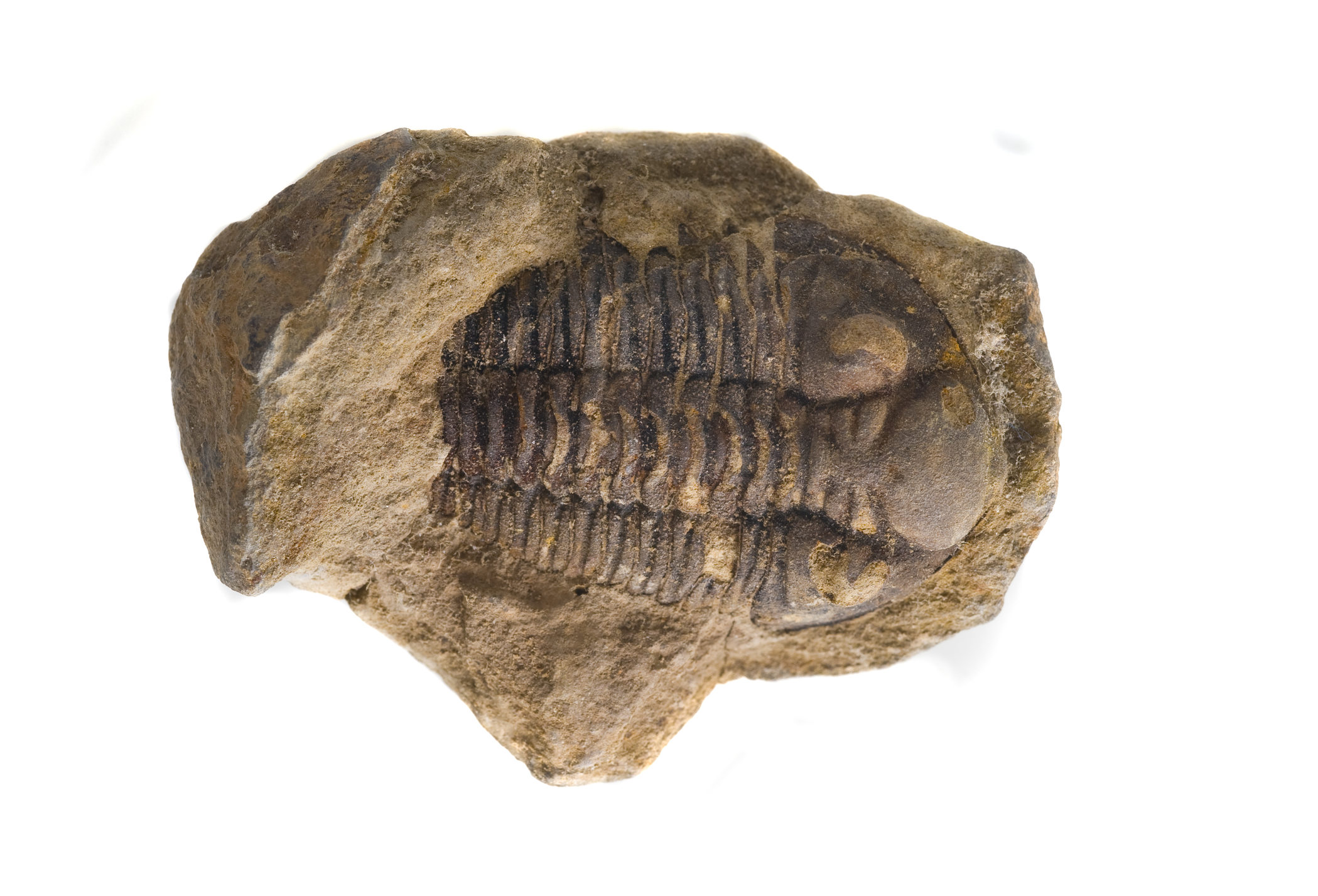
Cephalopods
Cephalopods are a large group of predatory marine animals that today are most well represented by the squid and the octopus. In the fossil record, however, you can find the remains of hard-shelled cephalopods like nautiloids and ammonites. Cephalopod shells can be straight or coiled, depending on the species.
In Ohio, you can find quite a few cephalopod fossils in rocks ranging from Ordovician to Pennsylvanian in age.
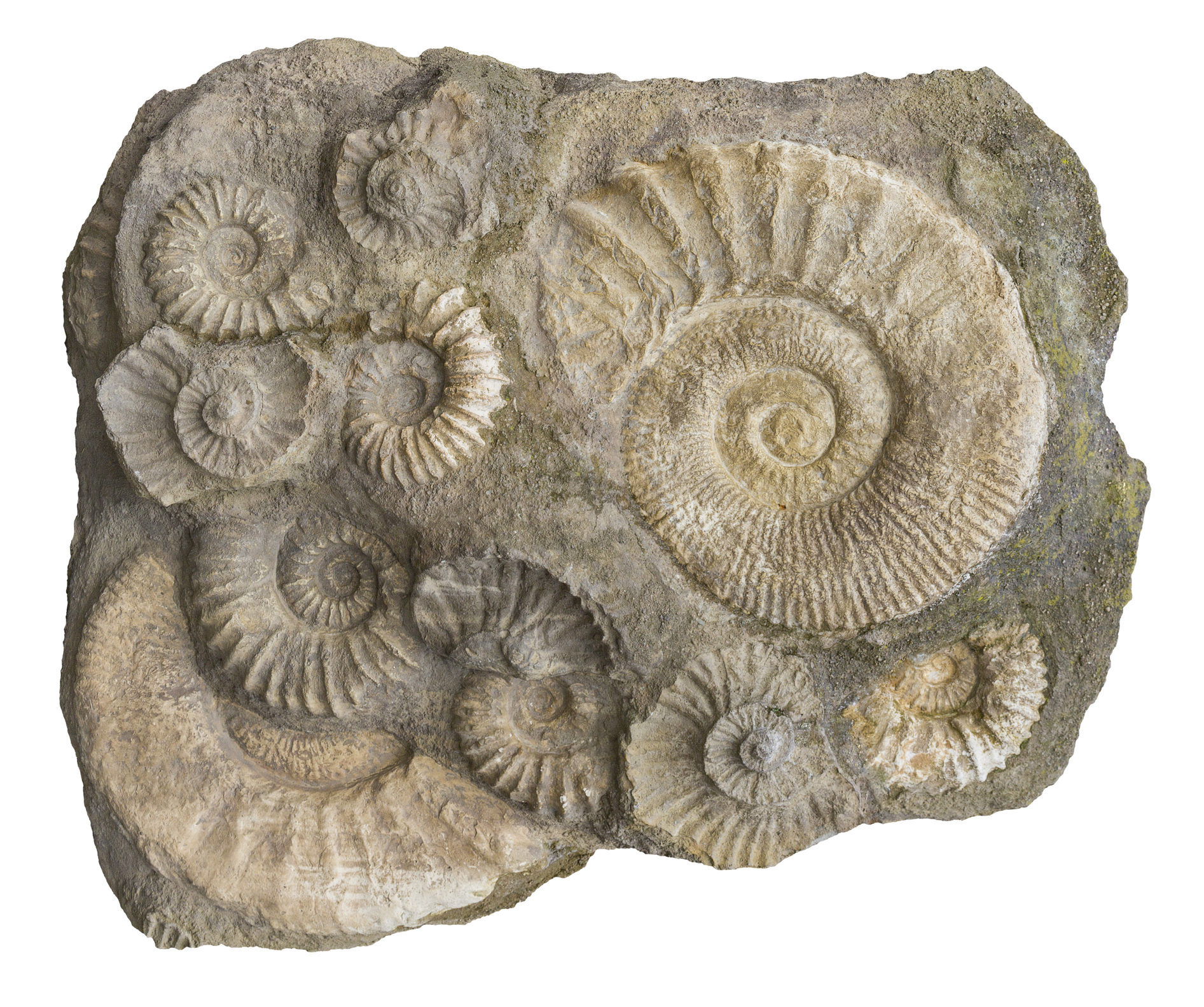
Coral
We all know and love coral as the brightly colored and fantastically-shaped home of many tropical fish, but it is also a large and important part of the fossil record. There are countless species to be found, and they come in a wide variety of shapes and patterns.
In Ohio, coral fossils are most abundant in Silurian and Devonian rocks, but are present to some degree in almost every age. Of particular note in Ohio is the ‘solitary rugose coral’, sometimes called ‘horn corals’ because of their horn-like appearance.

Crinoids
Crinoids are some of my personal favorite fossils. These creatures were beautiful when alive, forming delicate flower-like polyps attached to their stems.
Crinoid stems are very easy to find in most fossil beds, but unfortunately, the polyps were made of softer material and are much rarer to find. You can usually find them in large clusters or groups.
In Ohio, crinoids can be found in all ages of rock from the Ordovian and younger, particularly in the famous fossil beds of the Cincinnati arch in southwestern Ohio.
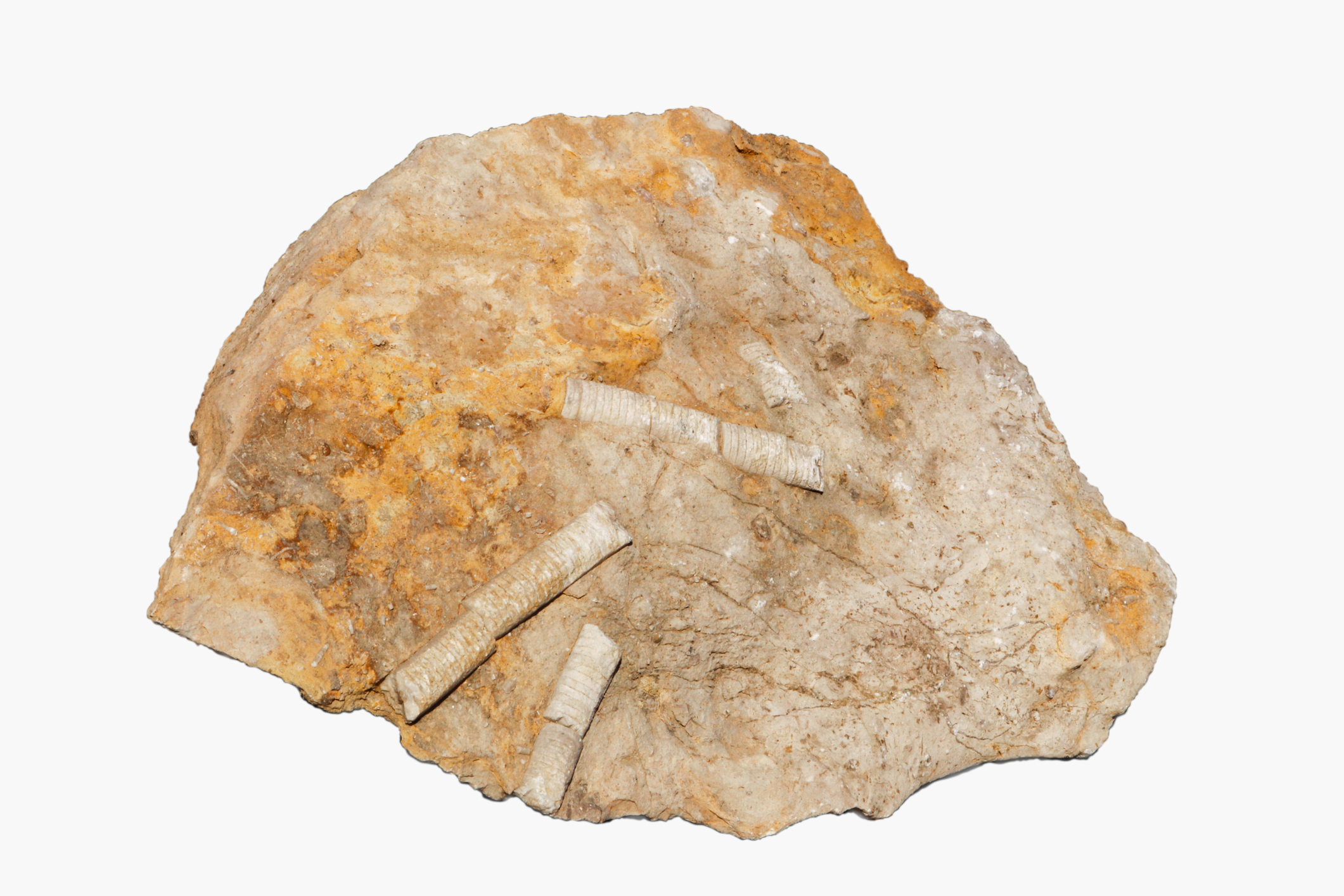
Brachiopods
Brachiopods are some of the most common and easily recognizable fossils you can find, consisting of two shells (one upper and one lower). The shells of many species have a ridged appearance. They lived in the sands at the bottom of shallow seas.
Thousands of species of brachiopods have been identified in the fossil record. They can be almost microscopic or up to several inches in size.
Brachiopods have existed for many millions of years and still endure today, making them a ‘living fossil’. They have been found as far back as the Cambrian.
In Ohio, Brachiopods are most abundant in Paleozoic era rocks, particularly the Ordovician.
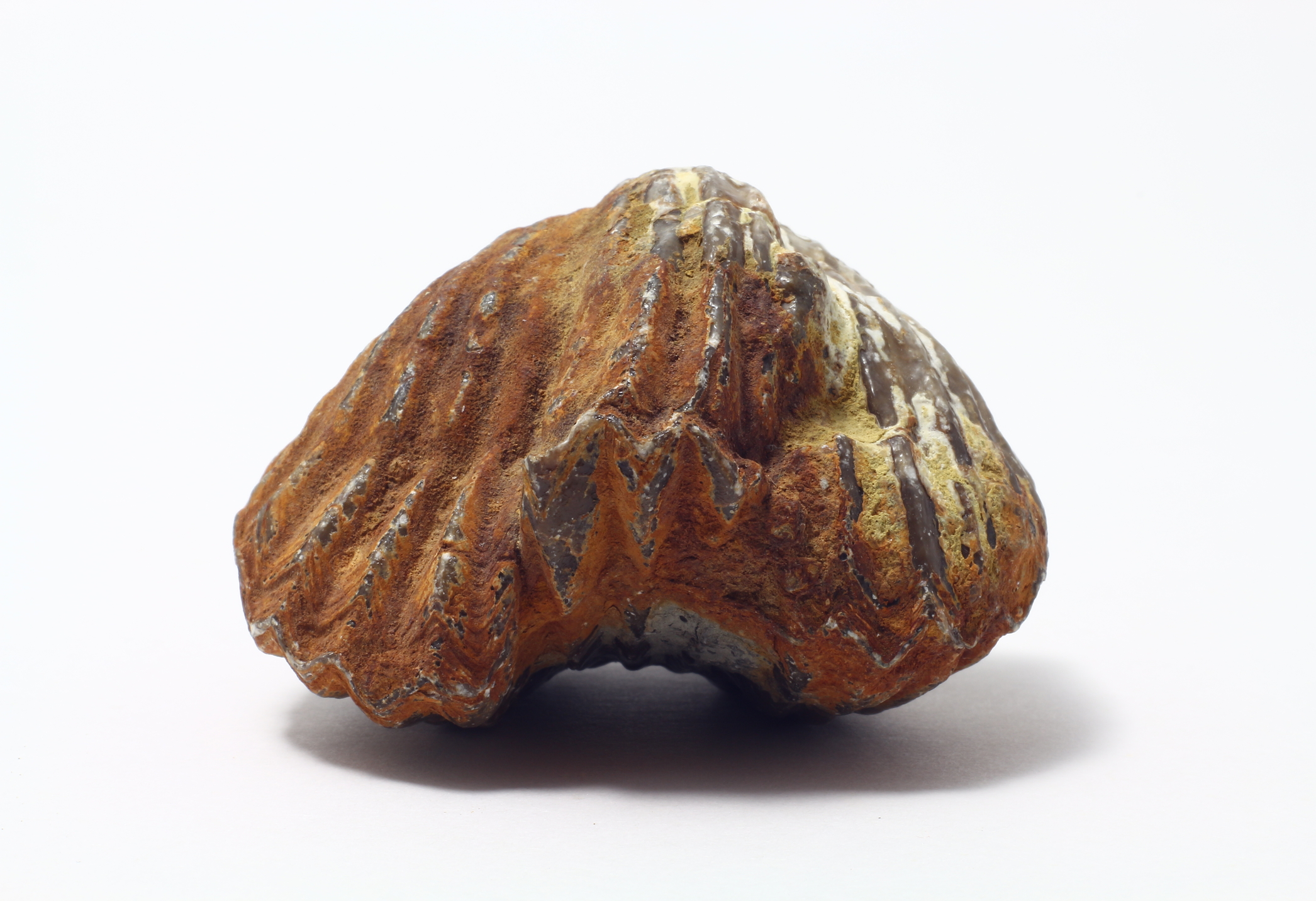
Graptolites
Graptolites were tiny animals that lived in colonies. At first, they were attached to the seafloor, but they later evolved to be free-floating in the water column. Their fossils look like long scribbles, often with serrated edges.
Graptolites were most common in the Cambrian and Carboniferous periods. They are now extinct but have close relatives that still endure today.
In Ohio, graptolites are fairly rare to find, but your best bet is to look in Ordovician, Silurian, and Devonian strata.
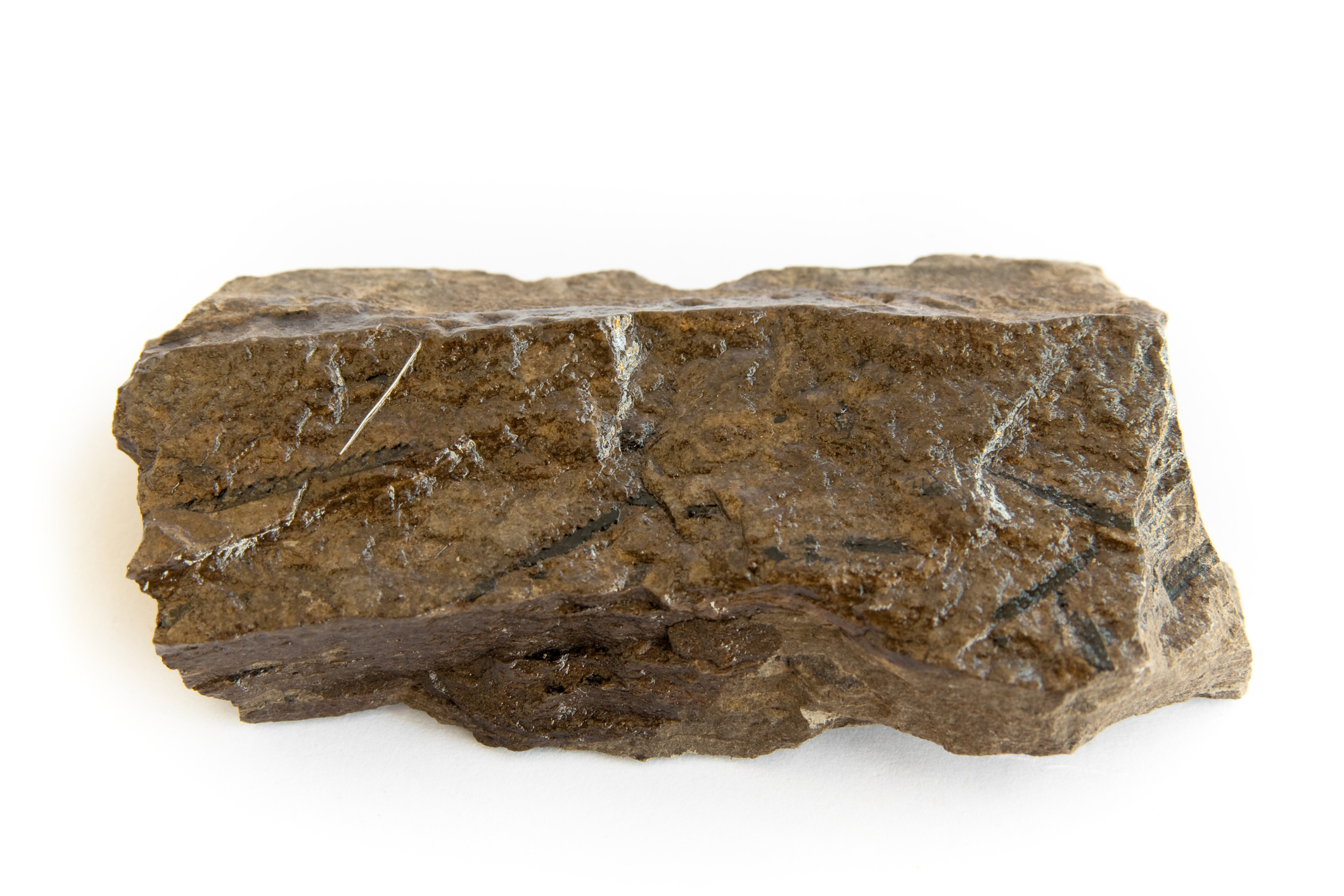
Bryozoans
Bryozoans are some of the most common fossils in the world, but many people remain unfamiliar with them. There are many different types of bryozoan fossils, but they are colonial marine animals with hard shells. When living, bryozoans often formed delicate fan-like structures. They are often confused for coral.
Bryozoan fossils often look like small, branching twigs. It is fairly rare to find an entire bryozoan colony completely intact, but it is very common to find smaller, broken pieces.
In Ohio, bryozoans are most commonly found in the fossil-rich Ordovician rocks of southwestern Ohio.
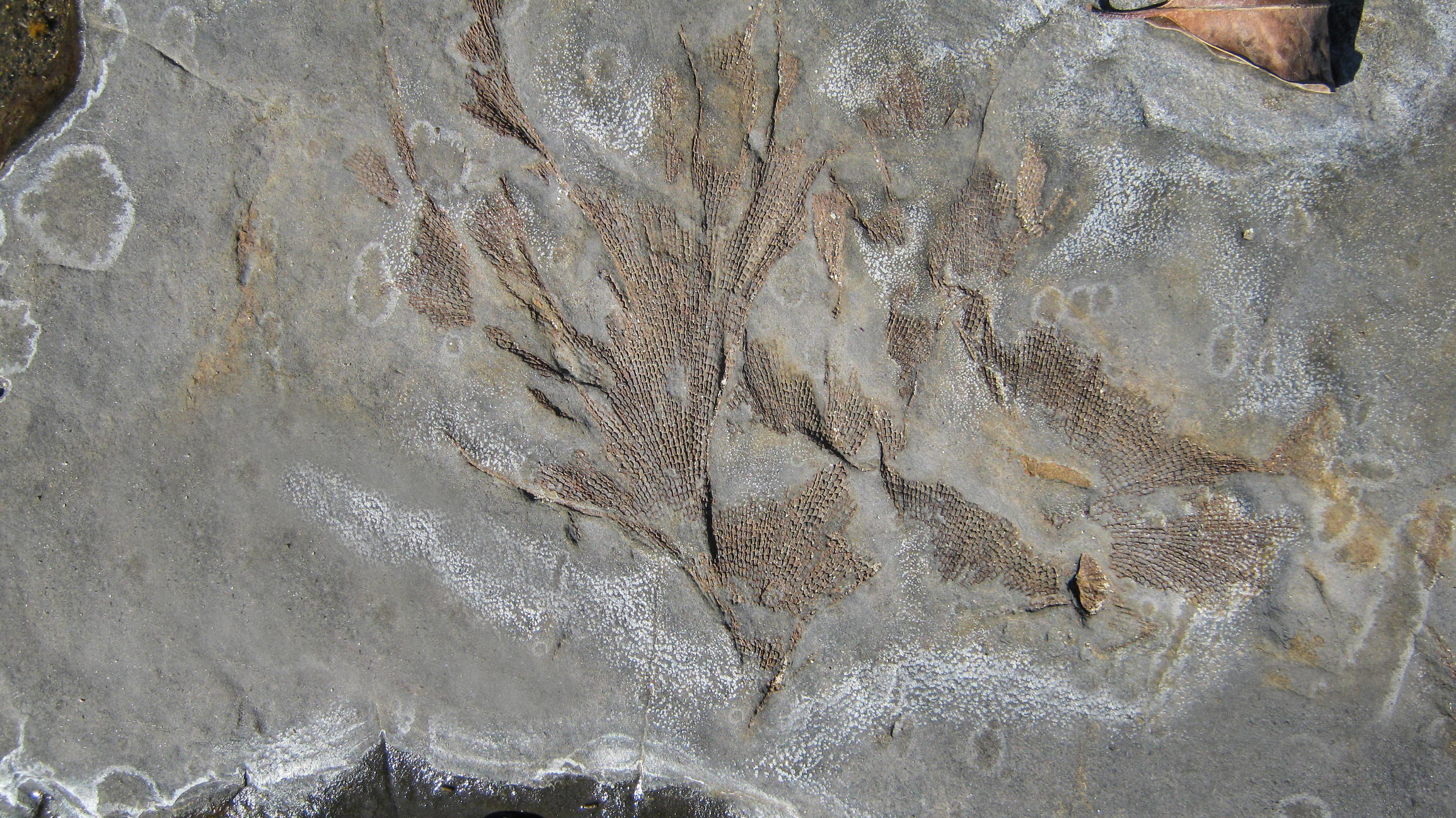
Plant Fossils
When people go fossil hunting they usually set out with the goal of finding shells or bones of extinct animals, without even considering fossilized plants. Plants are an important (and fun!) part of the fossil record, but because they are usually made up of soft material they are not often preserved.
Some of the most important (and relatively common) plant fossils are called stromatolites, which are large mounds made up of ancient algae. They grow in roughly concentric rings, layer by layer.
In Ohio, you can find fossils of stromatolites and many other plant types like lycopods, ferns, and conifers. Depending on the type of plant, these fossils can range in age from Ordovician to very recent.
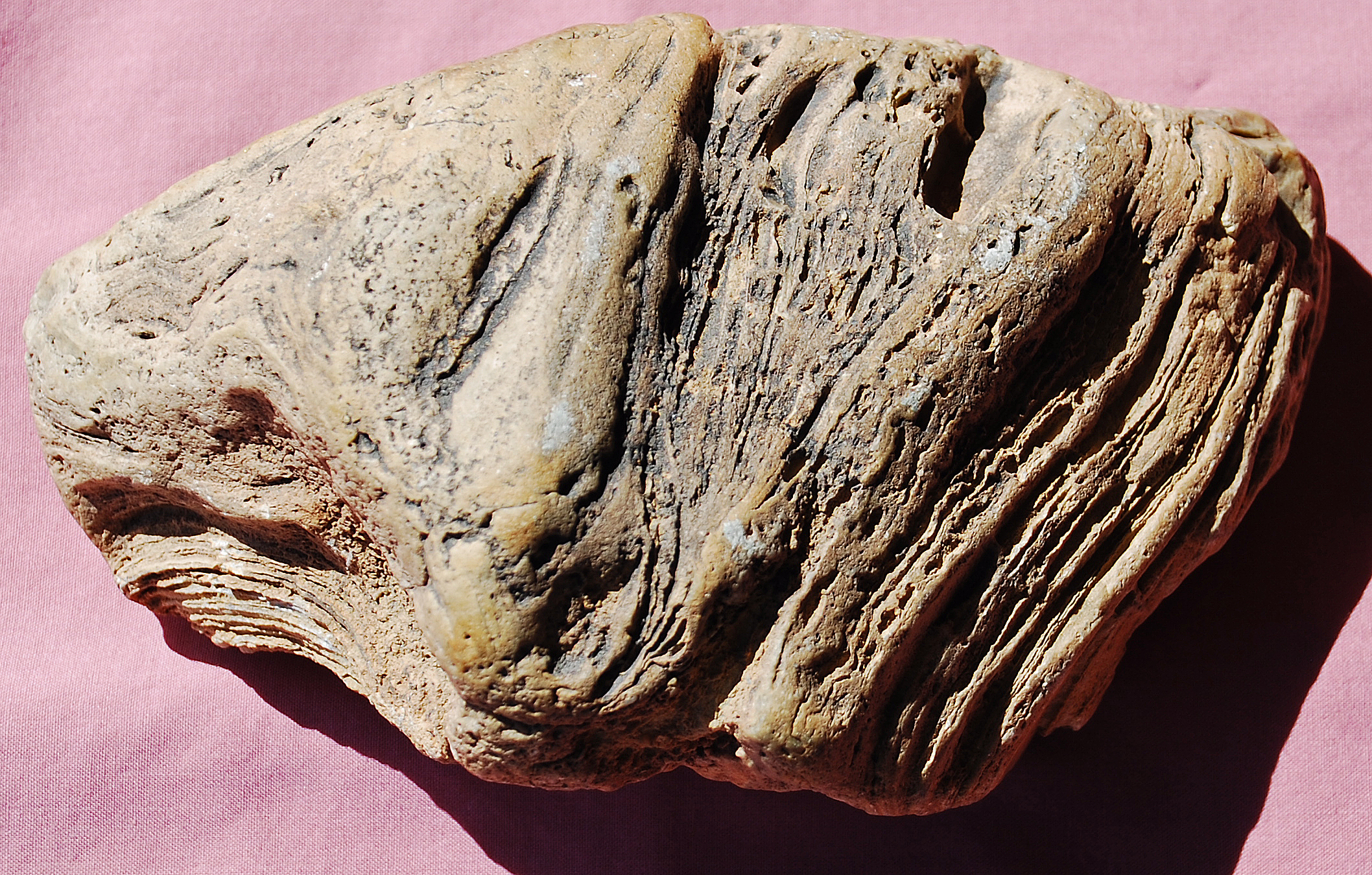
Fish Fossils
Since fish are so prevalent today that we don’t often think about them as fossils, but they have been around so long that they are actually a big part of the fossil record.
Finding intact fossils like the one pictured here is a fairly rare experience for amateur fossil hunters, but finding fish bones as part of incomplete skeletons can be common finds in some places.
In Ohio, you can find abundant fossilized fish in Devonian and Pennsylvanian rocks. The Devonian age rocks in the Cleveland area are especially famous for large Dunleosteus Terrelli fossils, which are the official fossil fish. You can read more about the large, armored fish here.
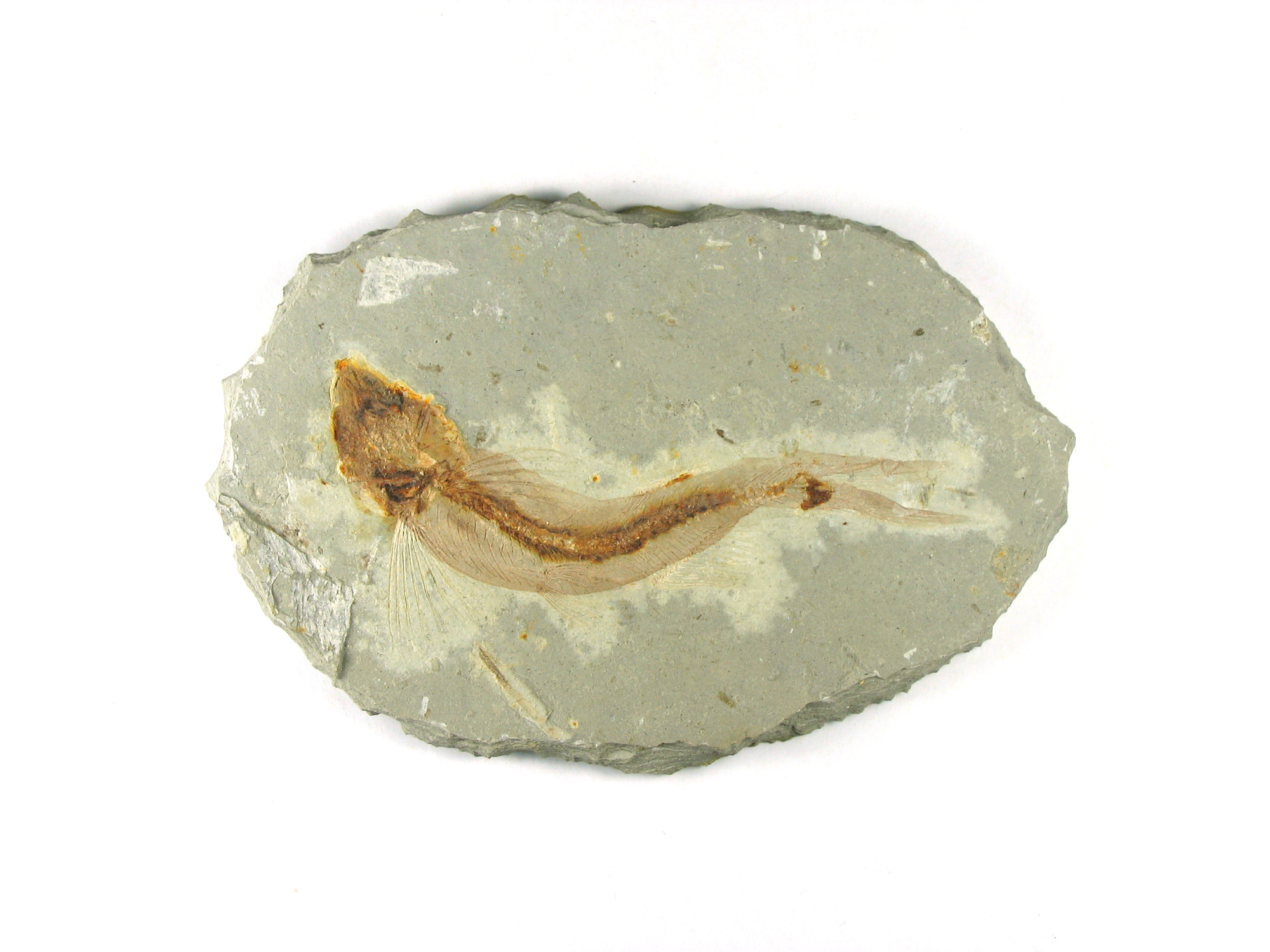
Shark Teeth
Shark teeth are some of the most abundant and popular fossils around. They are often collected near present-day beaches, but they can be found almost anywhere that used to be covered by ocean water.
Skeletons and other remains of sharks are less common to find, but do occur. Shark teeth are extremely hard and abundant, so they are more easily preserved and easy to find.
In Ohio, shark fossils have been found in Devonian, Mississippian, Pennsylvanian, and Permian rocks. The most prolific shark-teeth bearing formation in Ohio is the Columbus Limestone.
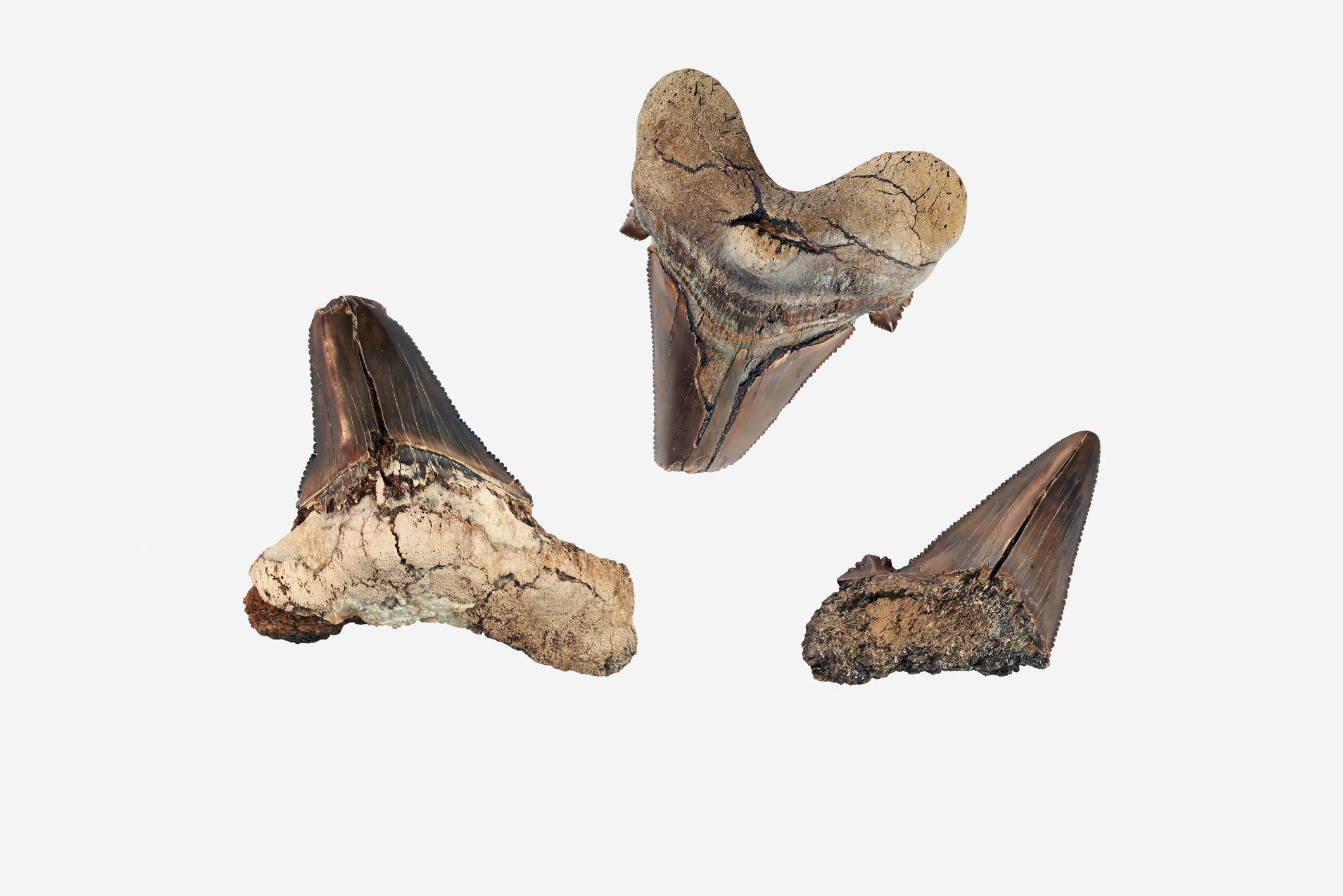
FAQs About Fossil Hunting in Ohio
Do You Need a Permit to Collect Fossils in Ohio?
When collecting fossils or rocks, it is imperative that you obtain permission from the landowner before removing anything from a piece of property. In some places in the United States there are even different rules about collecting depending on the type of fossils you’re finding.
According to the Ohio Department of Natural Resources, you need a free fossil collecting permit at some state parks, while other public parks do not require a permit. Check with each park for their rules on collecting. Written or verbal permission to collect on private land should always be obtained first.
Can I Find Trilobites in Ohio?
Almost every fossil collector wants to find some great trilobite specimens. They are such unique and cool looking fossils that they are a must for any collection. Luckily, trilobites aren’t very hard to find in Ohio.
Trilobites can be found in Ohio in Ordovician, Silurian, Devonian, Mississippian, and Pennsylvanian rocks, especially in the southwestern part of the state. Many types can be found including Flexicalymene, Bumastus, Phacops, Cedaria, and Isotelus which is the official invertebrate fossil of Ohio.
Can I Find Dinosaur Bones in Ohio?
With Ohio’s reputation as a fossil collecting destination, you might wonder if you can find any dinosaur bones in the area. Unfortunately, this is one area where Ohio fossil collecting falls short.
No dinosaur fossils have ever been found in Ohio, and it is unlikely that they ever will be. Dinosaurs lived during the Mesozoic era, and all of the fossil-bearing rocks exposed on the surface in Ohio are older than that. Mesozoic era (dinosaur-aged) rocks have all been eroded away, taking any fossils with them.
